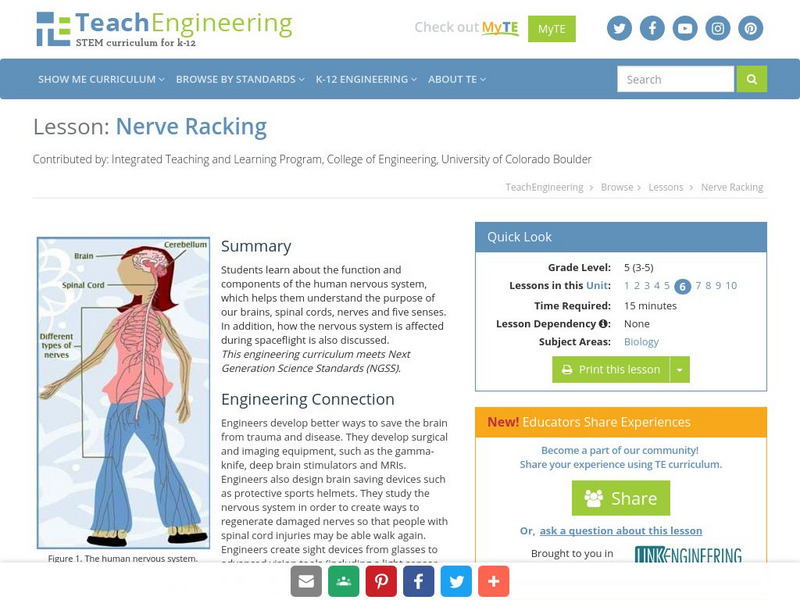Curated OER
It's All in Your Mind
Students investigate the definition of memory. In this memory lesson students investigate strategies to improve memory as well as examine what the difference is between a short-term memory and a long-term memory.
Curated OER
Brain Health and Brain Anatomy
Students explore different intelligences. In this brain health instructional activity, students work through several activities to help them identify the type of intelligence they have. Students will focus on understanding their personal...
Curated OER
Adrenoleukodystrophy (ALD):A Case Study Using the Film
Students study the genetic disorder Adrenoleukodystrophy (ALD) by viewing the film "Lorenzo's Oil". They complete a summary of the movie and answer questions while viewing the movie. Extensions activities also included.
Curated OER
Human Anatomy
Young scholars use the web to explain how the bones serve as protection for organs in the body and recognize some of the bone structure that protect certain organs. They comprehend the different structure and functions of support tissue...
Curated OER
Brain Cells
In this brain cells worksheet, students learn about neurons. Students read about the different types of neurons and their life span. Students also study the neuron diagram and glial cells.
Curated OER
Show 303: New Research into Dyslexia
Students explore the causes of dyslexia. They view CT sans and MRIs to view the brain and how it responds. Students read reports about dyslexia. They discuss the nature of dyslexia, its cause, how to diagnose it, and its permanency.
Curated OER
Bones: Reading and Quiz
Make no bones about it- this anatomy worksheet is all about the human skeleton! Learners read a 2-page informational excerpt on bones and then use the information they learned to answer 9 recall questions, including 4 multiple-choice and...
Curated OER
Human Body Quiz
In this human body worksheet, students complete short answer questions about the organs in the body and their functions. Students complete 20 questions.
Enchanted Learning
Enchanted Learning: The Brain
Learn about the brain, spinal cord, and brain cells at this thorough yet easy to read site. Simple sentence construction is used to explain the structure and function of this body system. A glossary is just a click away to explain...
TeachEngineering
Teach Engineering: Hearing: How Do Our Ears Work?
Students learn about the anatomy of the ear and how the ears work as a sound sensor. Ear anatomy parts and structures are explained in detail, as well as how sound is transmitted mechanically and then electrically through them to the...
PBS
Pbs Teachers: Scientific American: Make Up Your Mind: Mind Mapping
Investigate the pseudoscience of phrenology and its attempt to organize and assign different purposes to different parts of the brain. Create a phrenology chart on a bathing cap and compare it to modern understanding of brain function...
TeachEngineering
Teach Engineering: Nerve Racking
This lesson describes the function and components of the human nervous system. It helps students understand the purpose of our brain, spinal cord, nerves and the five senses. How the nervous system is affected during spaceflight is also...
TeachEngineering
Teach Engineering: Human and Robot Sensors
Students are provided with a rigorous background in human "sensors" (including information on the main five senses, sensor anatomies, and nervous system process) and their engineering equivalents, setting the stage for three associated...
ClassFlow
Class Flow: Human Body Systems
[Free Registration/Login Required] This flipchart introduces students to some of the major organs of the human body. Visual aids provide focused information on the heart and circulatory system as well as the brain and the eye.













